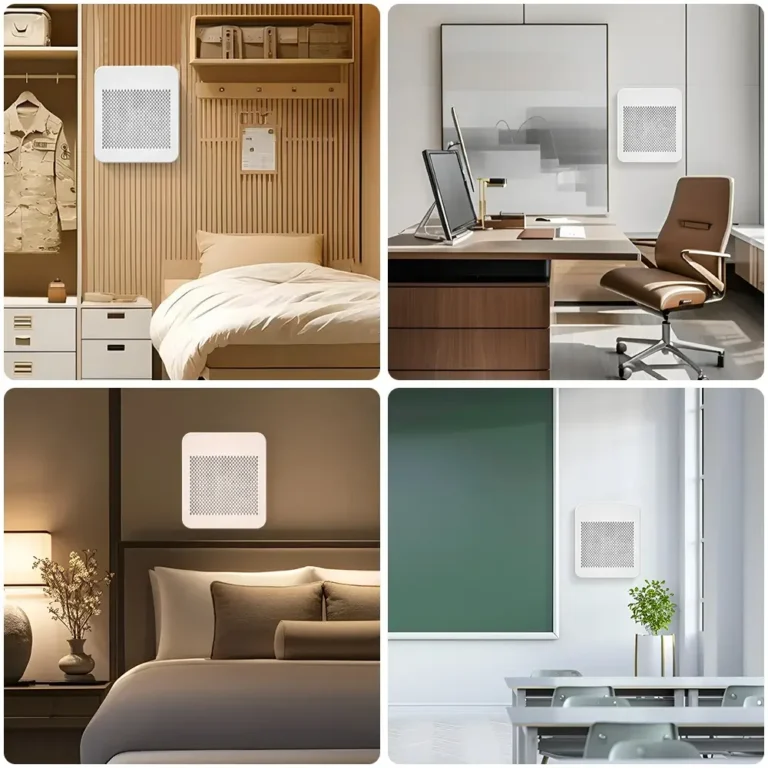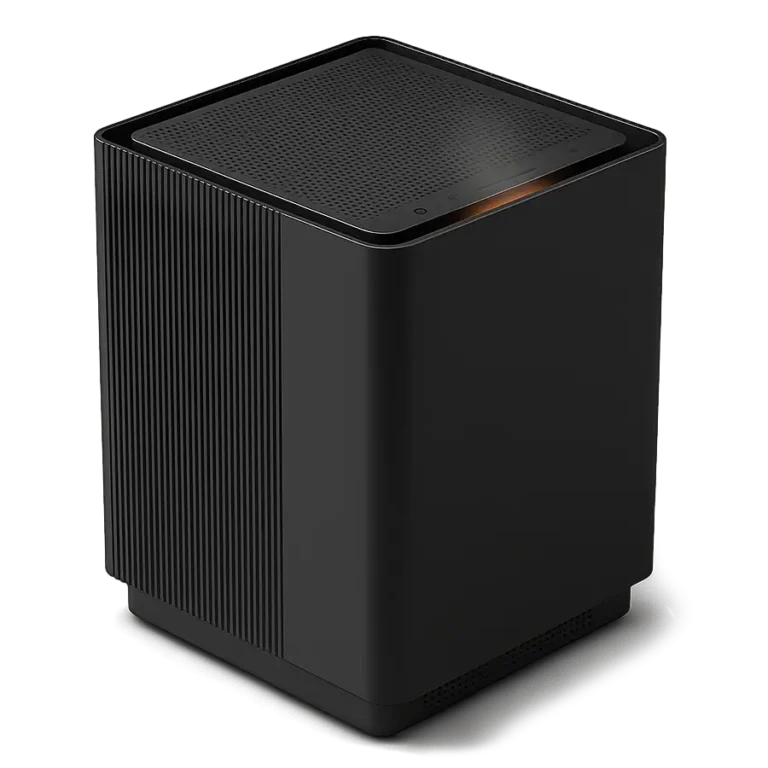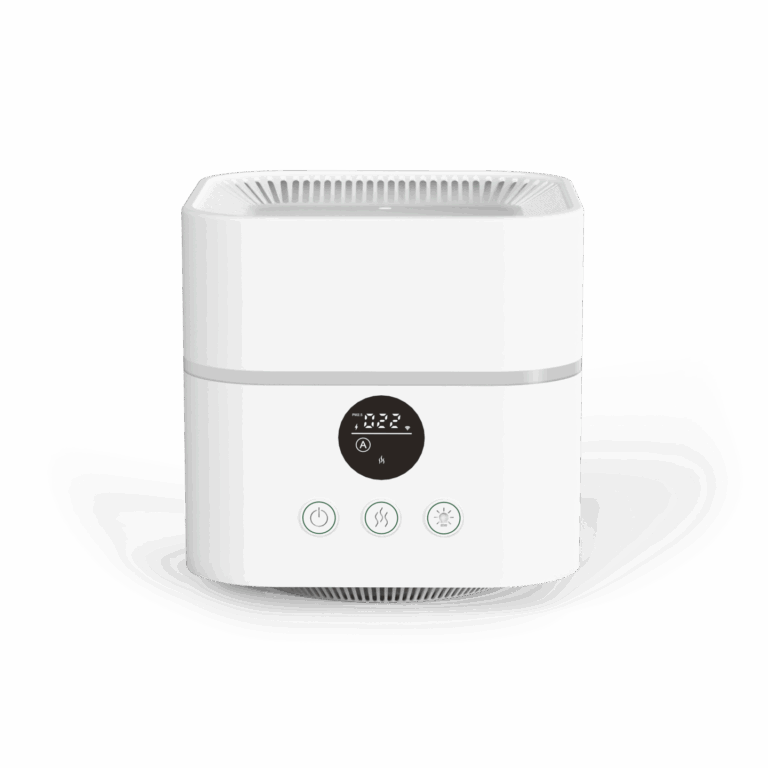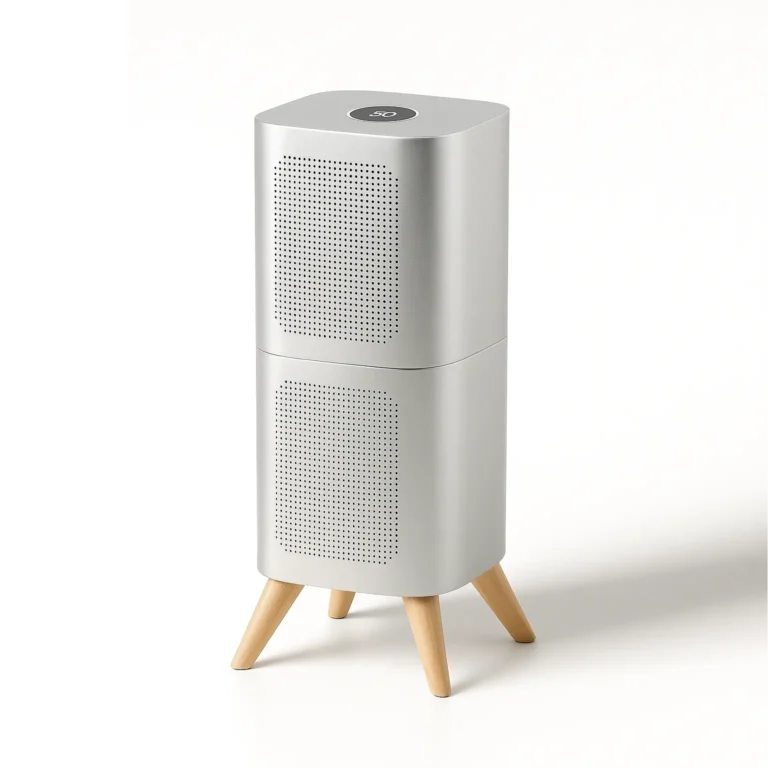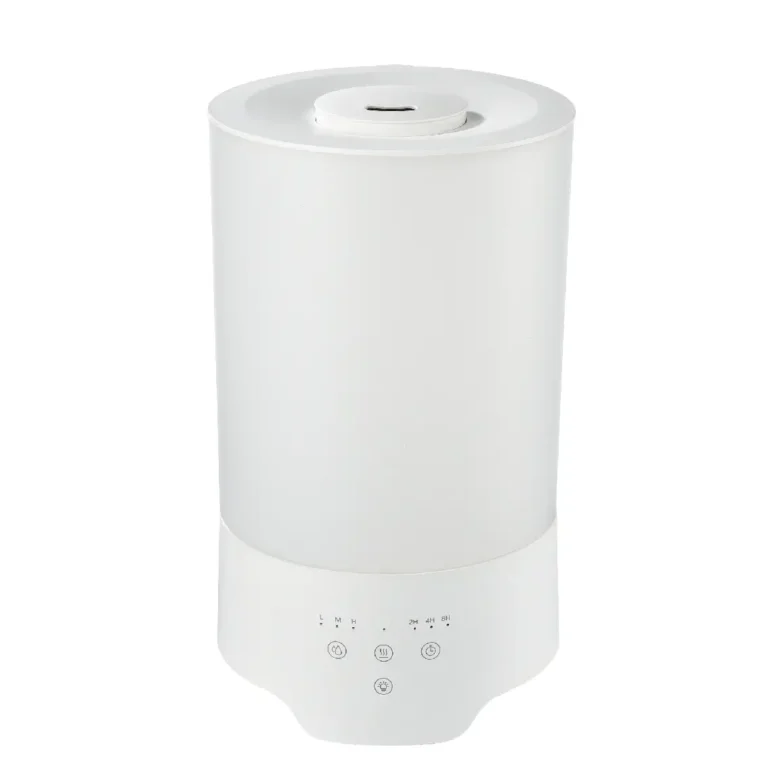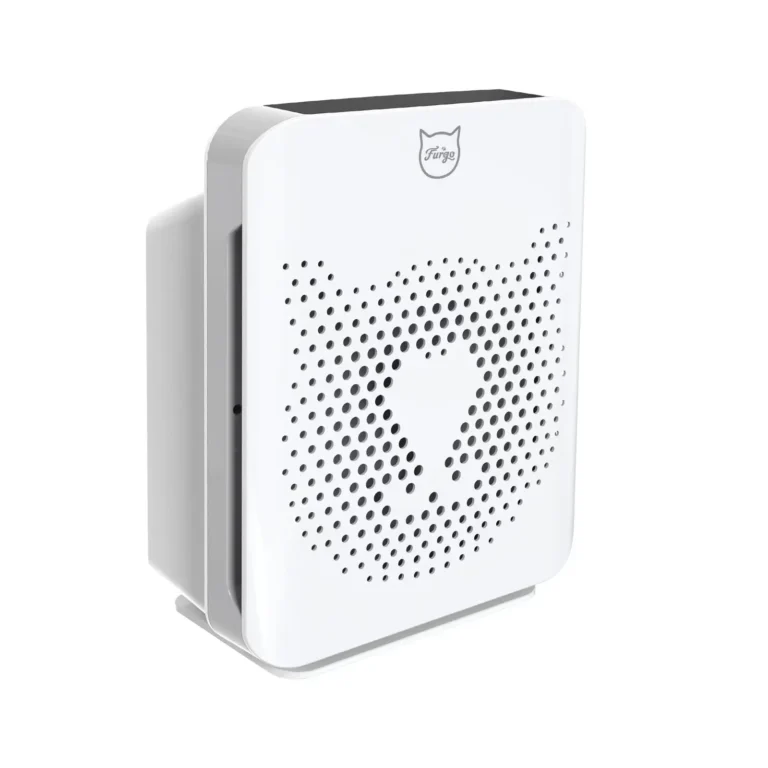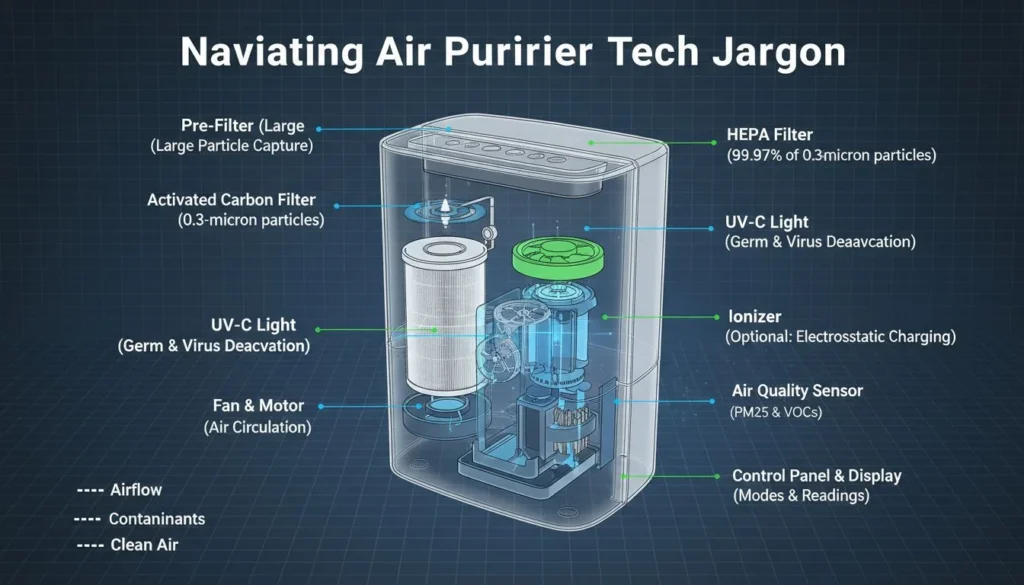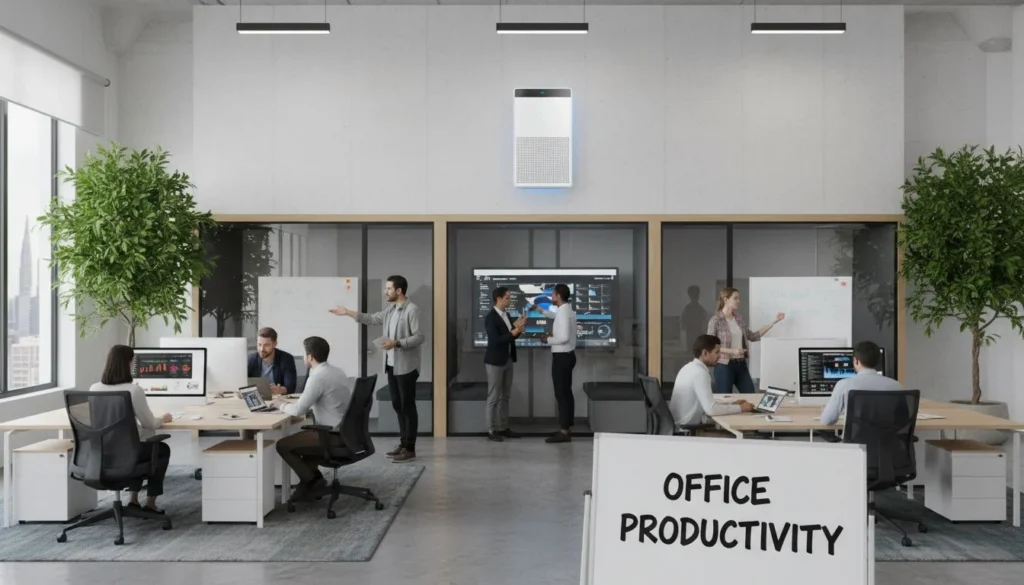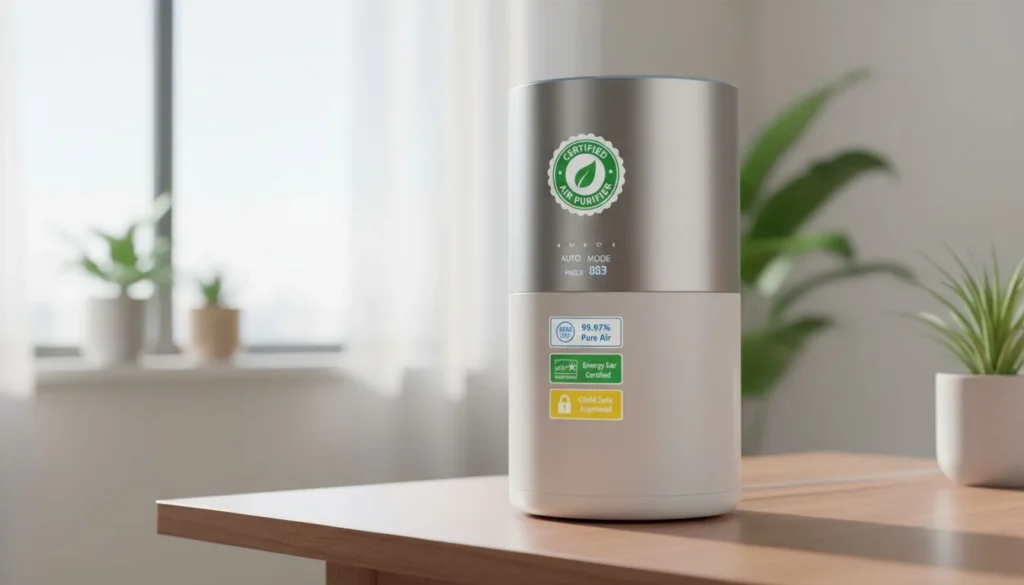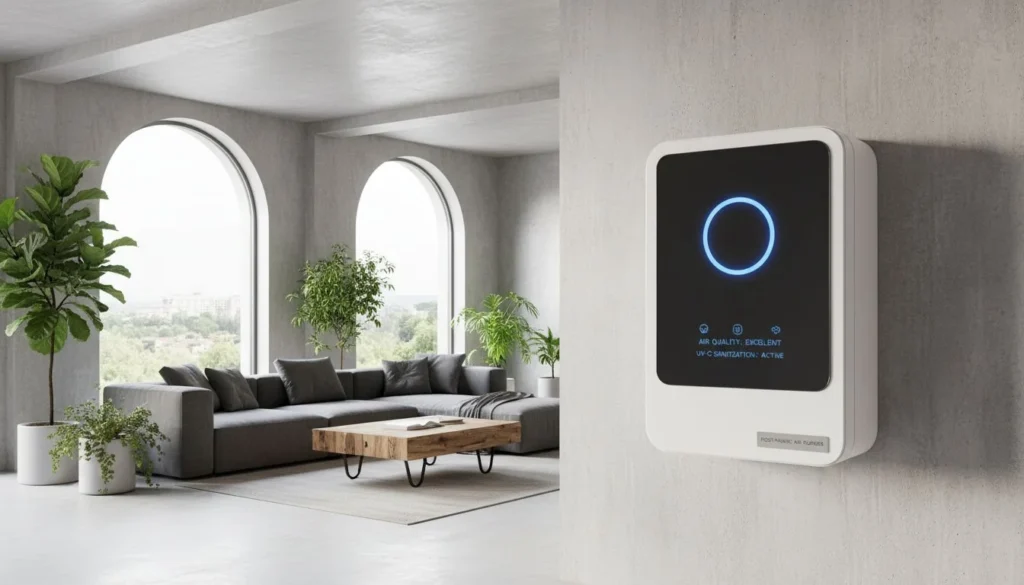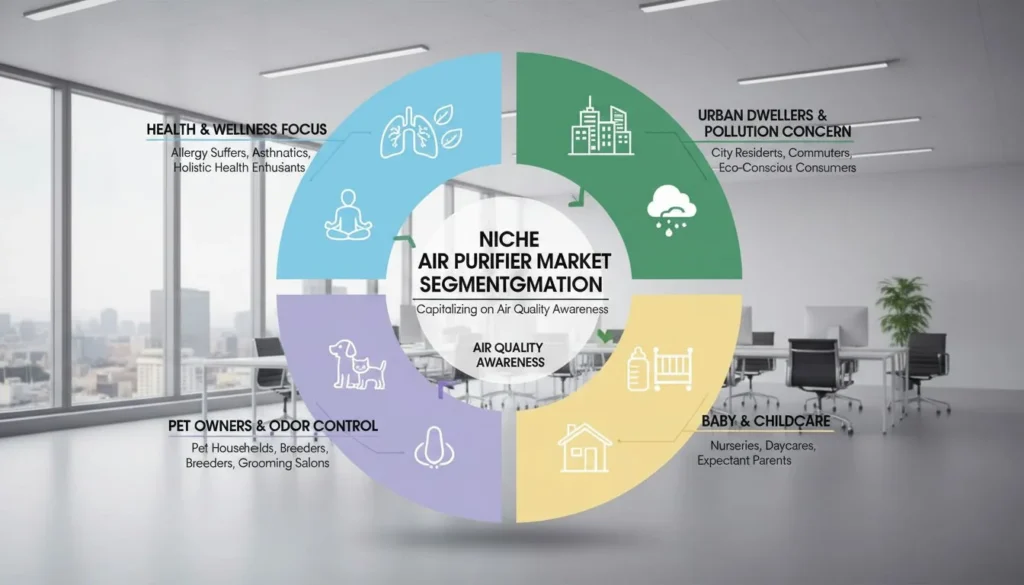As someone who has spent over a decade in the Indoor Air Quality (IAQ) industry, I've witnessed firsthand how the right air quality solutions can transform businesses. At HisoAir, where we specialize in OEM/ODM manufacturing of premium air purifiers and humidifiers across our facilities in China, Vietnam, and Thailand, I've had the privilege of guiding countless B2B buyers through the complex landscape of air quality products.

Do you ever wonder which investment will yield better returns for your business—air purifiers or humidifiers? Or perhaps you're considering how to position these products to maximize your sales potential? These questions are increasingly relevant as global awareness of indoor air quality continues to rise, creating unprecedented opportunities in the market.
In this comprehensive guide, I'll share strategic insights that will help you navigate the air purifier and humidifier market with confidence. Drawing from my experience working with distributors, e-commerce brands, and corporate buyers across North America, Europe, and Asia, I'll address the five critical areas that determine success in this industry:
- Leveraging health benefits to drive sales growth
- Utilizing 2-in-1 air purifier and humidifier products for OEM differentiation
- Selecting reliable suppliers like HisoAir for sustainable partnerships
- Optimizing sales strategies through seasonal considerations
- Gaining competitive advantage through market research and analysis of top brands
Whether you're an established distributor looking to expand your product line, an e-commerce entrepreneur seeking the next profitable niche, or a corporate buyer responsible for improving workplace air quality, this article will provide you with actionable insights to maximize your return on investment.
Let's dive into how you can make informed decisions that will position your business for success in the growing air quality market.
How Can Health Benefits Drive Sales Growth for Air Purifiers and Humidifiers?
Do you know what truly motivates consumers to invest in air quality products? In my years working with successful B2B clients across global markets, I've discovered that health benefits consistently rank as the primary purchase driver. Understanding this connection is crucial for any business looking to maximize returns in the air quality market.
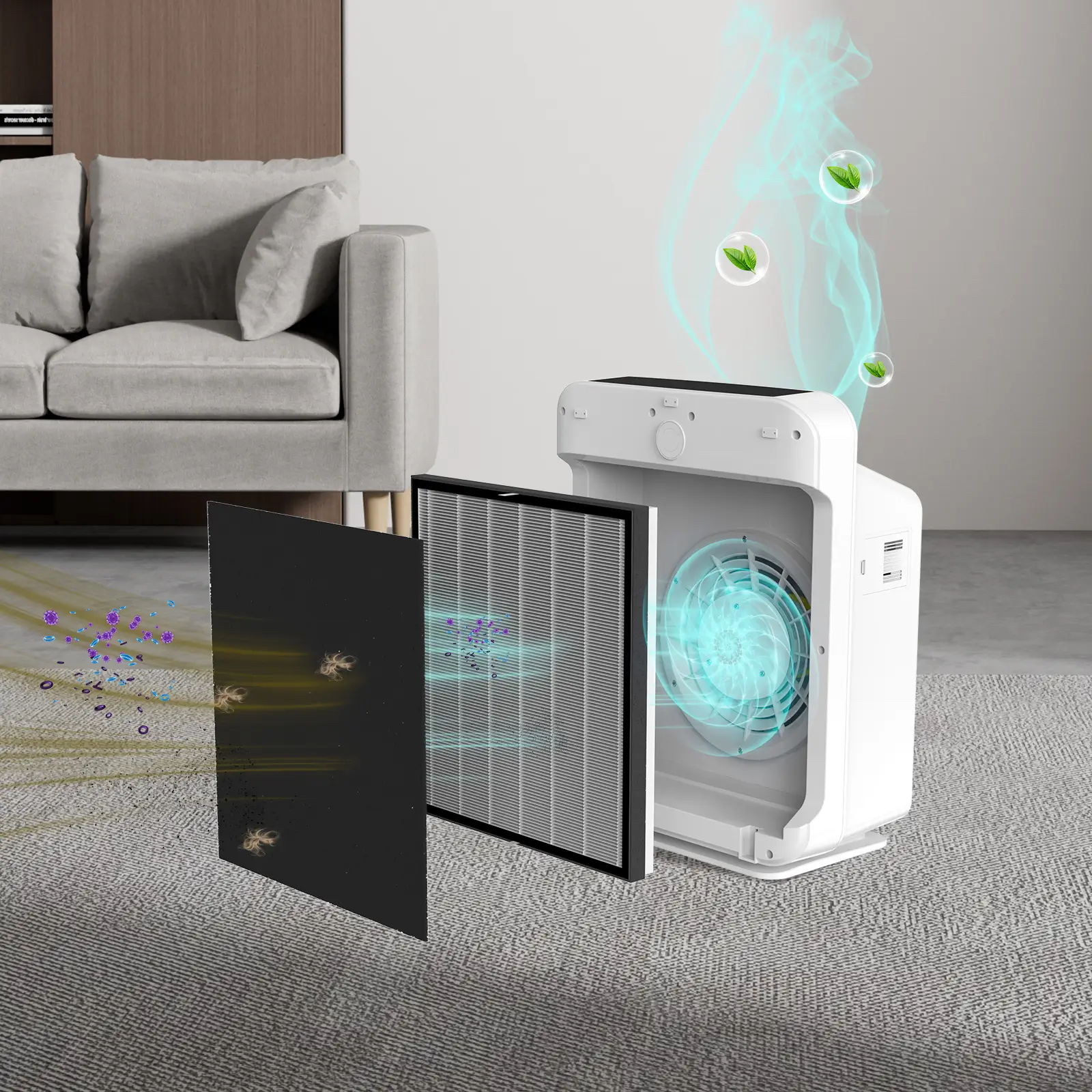
Why Indoor Air Quality Matters to Your Bottom Line
Indoor air quality1 has emerged as a critical concern for consumers worldwide, particularly following global health crises that heightened awareness about airborne threats. Research shows that people spend approximately 90% of their time indoors, where air pollution levels can be 2-5 times higher than outdoor levels. This reality creates a substantial market opportunity for businesses that can effectively communicate how their products address these concerns.
Air purifiers and humidifiers approach indoor air quality from different but complementary angles:
- Purificadores de ar remove particulate matter, allergens, bacteria, viruses, and volatile organic compounds (VOCs) from the air, directly addressing pollution concerns.
- Humidificadores maintain optimal moisture levels, preventing issues associated with dry air while creating conditions less favorable for certain airborne pathogens.
When marketing these products to end consumers, highlighting specific health benefits creates compelling value propositions that drive purchasing decisions. Let me share what I've observed works best with our most successful B2B partners.
Key Health Benefits That Convert to Sales
In my experience working with distributors across North America and Europe, these are the health benefits that consistently resonate with consumers:
| Health Benefit | Air Purifier Impact | Humidifier Impact | Marketing Potential |
|---|---|---|---|
| Allergy Relief | Removes pollen, dust mites, pet dander | Prevents dry nasal passages, eases symptoms | High (affects 30-40% of population) |
| Asthma Management | Eliminates triggers like smoke, mold spores | Prevents dry air irritation of airways | Very High (growing concern globally) |
| Skin Hydration | Minimal direct impact | Prevents dry skin, eczema flare-ups | High (appeals to beauty-conscious consumers) |
| Respiratory health2 | Removes irritants and pathogens | Maintains mucous membrane integrity | Very High (universal concern) |
| Sleep Quality | Reduces nighttime allergies and irritation | Creates optimal breathing conditions | High (wellness market crossover) |
I recall working with a distributor in Canada who was struggling with sluggish sales until we repositioned their marketing to focus specifically on winter respiratory health benefits. By creating educational content about how dry indoor heating affects respiratory health and how humidifiers can mitigate these issues, they saw a 43% increase in sales during their next winter season.
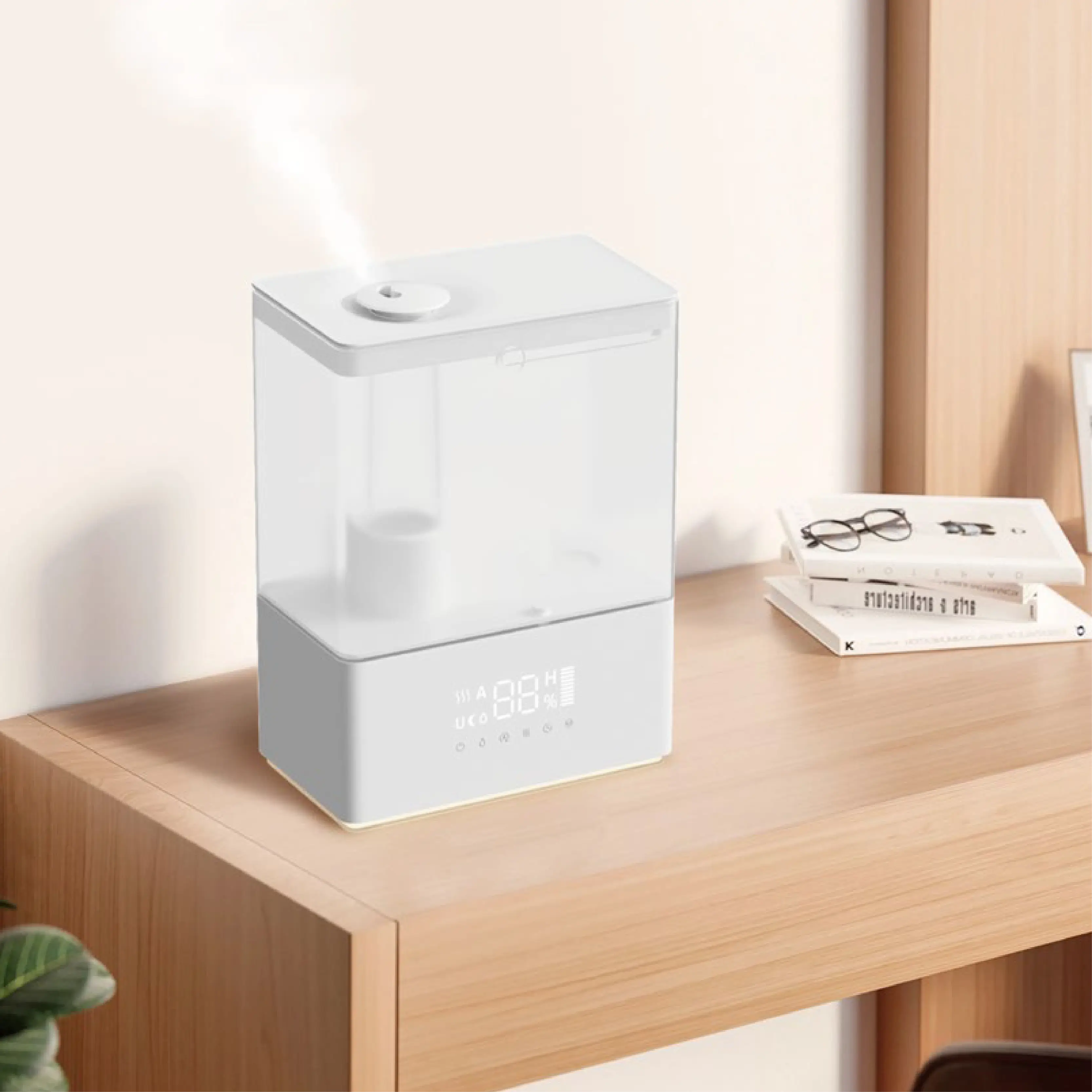
Effective Strategies to Leverage Health Benefits in Marketing
Based on my experience with successful B2B clients, here are proven approaches to transform health benefits into sales drivers:
-
Educate Rather Than Sell: Create content that explains the science behind air quality and health. Our partners who invest in educational blogs, videos, and infographics consistently outperform those who focus solely on product features.
-
Target Specific Health Concerns: Segment marketing efforts to address particular health issues prevalent in your market. For instance, focusing on allergy relief during spring pollen seasons or respiratory protection during winter flu seasons.
-
Utilize Data and Studies: Incorporate credible research findings into your marketing materials. When one of our European partners included statistics from air quality studies in their product descriptions, their conversion rates improved by 28%.
-
Showcase Real Results: Feature testimonials and case studies from users who experienced health improvements. Authentic stories create emotional connections that drive purchasing decisions.
-
Partner with Health Professionals: Collaborations with doctors, allergists, or wellness experts add credibility to health claims and open new distribution channels.
I've seen firsthand how a strategic focus on health benefits transforms ordinary air quality products into essential wellness investments in consumers' minds. This perception shift not only drives initial sales but also increases willingness to pay premium prices for superior protection.
Remember that different markets may prioritize different health benefits. For instance, our partners in regions with high pollution levels focus heavily on particulate removal, while those in northern climates emphasize respiratory benefits during dry winter months. Understanding your specific market's health concerns is the first step toward creating targeted messaging that converts.
By positioning your air purifiers and humidifiers as solutions to specific health problems rather than just technical devices, you create a compelling value proposition that resonates with health-conscious consumers and drives sustainable sales growth.
Why Are 2-in-1 Air Purifier and Humidifier Products Key for OEM Differentiation?
Have you considered how combining functionalities could transform your product offerings and market position? In today's competitive landscape, product differentiation is essential for capturing market share and commanding premium prices. This is where 2-in-1 devices3 offer a compelling advantage for B2B buyers and online sellers.
The Strategic Advantage of Dual-Function Devices
As markets mature, consumers increasingly seek products that solve multiple problems simultaneously. 2-in-1 devices that combine air purification and humidification represent a significant opportunity in the IAQ industry. Based on my experience working with successful B2B clients, these combination products deliver several strategic advantages:
Meeting Diverse Consumer Needs with a Single Solution
Modern consumers face complex indoor air challenges that often require both purification and humidity control. Rather than purchasing, maintaining, and finding space for two separate devices, they increasingly prefer integrated solutions.
I remember consulting with a home appliance distributor who was hesitant about introducing combination devices to their lineup. After implementing a test market strategy with our 2-in-1 products, they discovered that these units outsold standalone devices by 37% in their first quarter. The key insight? Consumers valued the convenience and space efficiency of the integrated solution.
Space and Cost Efficiency Benefits
For both retailers and end-users, combination devices offer compelling practical benefits:
| Benefício | For Retailers | For End-Users |
|---|---|---|
| Inventory Management | Reduced SKUs to manage | Single purchase decision |
| Utilização do espaço | Less shelf/warehouse space | Smaller footprint in home |
| Logistics | Lower shipping costs | One-time delivery and setup |
| Manutenção | Simplified service offerings | Single maintenance routine |
| Consumo de energia | Marketing advantage | Lower overall electricity usage |
These efficiencies translate directly to improved margins for retailers and distributors, while offering compelling value propositions for consumers. In fact, our partners report average profit margins 12-18% higher on 2-in-1 devices compared to standalone units.

Leveraging OEM Partnerships for Product Customization
The real power of OEM partnerships4 lies in the ability to create truly unique product offerings tailored to specific market segments. At HisoAir, we've helped numerous B2B clients develop customized 2-in-1 solutions that align perfectly with their brand positioning and target demographics.
Creating Unique Product Offerings
When working with OEM manufacturers like HisoAir, you gain access to customization options that can significantly differentiate your products:
-
Custom Feature Sets: Tailor functionality to your specific market needs, such as specialized filtration for pet owners or aromatherapy options for wellness-focused consumers.
-
Proprietary Control Systems: Develop unique user interfaces and control mechanisms that enhance user experience and build brand recognition.
-
Exclusive Technology Integration: Incorporate proprietary technologies that address specific air quality challenges in your target markets.
-
Design Differentiation: Create distinctive aesthetic elements that align with your brand identity and appeal to your customer base.
I recently worked with an e-commerce brand targeting the premium home market. By developing a customized 2-in-1 device with distinctive design elements and specialized quiet operation technology, they were able to position their product as a premium offering and achieve a 42% higher price point than comparable standalone devices.
Building Brand Identity Through Customization
In today's crowded marketplace, brand differentiation is essential for sustainable success. OEM partnerships provide a pathway to develop products that embody your brand values and resonate with your target audience.
Consider these customization opportunities:
- Aesthetic Alignment: Design elements that reflect your brand's visual identity
- Functional Focus: Emphasis on features that align with your brand positioning (eco-friendly, premium performance, technological innovation)
- Experiência do utilizador: Custom interfaces and controls that create a distinctive brand experience
- Packaging and Presentation: Cohesive unboxing and setup experiences that reinforce brand values
One of our most successful partners in Europe transformed their market position by developing a distinctive design language across their entire product line. Their 2-in-1 devices feature unique visual elements and user interfaces that consumers now immediately associate with their brand, creating a powerful competitive advantage.
The Future of Integrated Air Quality Solutions
The trend toward multifunctional devices continues to accelerate, with the next generation of products integrating even more capabilities. Forward-thinking B2B buyers are already exploring devices that combine:
- Air purification and humidification
- Temperature control and air treatment
- Air quality monitoring and automated response
- Smart home integration and predictive maintenance
By positioning your business at the forefront of this integration trend, you establish yourself as an innovator in the industry and create opportunities for premium positioning and higher margins.
The key to success lies in finding the right OEM partner who can help you navigate the technical challenges of integration while maintaining performance standards across all functions. This is where experienced manufacturers with proven track records in both air purification and humidification technologies provide significant advantages.
How to Select Reliable Suppliers like HisoAir for Your Air Quality Products?
Are you confident that your current suppliers can consistently deliver quality products that meet your customers' expectations? In my experience working with global B2B buyers, I've found that supplier selection is often the most critical factor determining long-term success in the air quality market.
Understanding the Criteria for Trusted Supplier Selection
Selecting the right manufacturing partner involves much more than comparing price points. The most successful B2B buyers I've worked with evaluate potential suppliers across multiple dimensions to ensure sustainable partnerships.
The Importance of Quality Certifications and Standards
Quality certifications5 serve as objective verification of a manufacturer's capabilities and commitment to excellence. When evaluating potential suppliers, look for these key certifications:
| Certificação | What It Verifies | Why It Matters |
|---|---|---|
| ISO 9001 | Sistemas de gestão da qualidade | Ensures consistent manufacturing processes |
| Marcação CE | European safety standards | Required for EU market access |
| UL Certification | North American safety standards | Critical for US/Canada distribution |
| CARB Compliance | California air quality standards | Increasingly important globally |
| Estrela de energia | Energy efficiency standards | Appeals to eco-conscious consumers |
Beyond formal certifications, evaluate a supplier's internal quality control processes. At HisoAir, for example, we conduct rigorous testing on CADR (Clean Air Delivery Rate), noise levels, and durability in our CNAS-approved laboratory to ensure every product meets or exceeds industry standards.
I recall working with a distributor who initially chose a supplier based primarily on price, only to face costly product recalls when units failed to meet safety standards in their market. The lesson? Thorough verification of quality certifications and testing protocols is an investment that prevents expensive problems later.
Assessing Reliability and Scalability
As your business grows, your supplier must be able to scale production accordingly without compromising quality or delivery timelines. Consider these factors when evaluating a supplier's reliability and scalability:
-
Production Capacity: Can they handle your current volume requirements and scale up as your business grows?
-
Manufacturing Facilities: Modern, well-maintained facilities with advanced equipment typically deliver more consistent quality.
-
Geographic Diversification: Suppliers with multiple manufacturing locations offer better supply chain resilience against regional disruptions.
-
Inventory Management: Effective inventory systems ensure consistent component availability and reduce production delays.
-
Quality Control at Scale: Robust quality assurance processes that maintain standards even during high-volume production periods.
One of our partners in North America experienced 40% year-over-year growth for three consecutive years. Their success was partly due to our ability to scale production across our facilities in China, Vietnam, and Thailand, ensuring consistent supply even as their order volumes increased dramatically.
Evaluating Supplier Reputation and Support
The relationship with your supplier extends far beyond the initial purchase. Comprehensive support throughout the product lifecycle creates significant value for B2B buyers:
- Technical Support: Access to engineering expertise for product customization and problem-solving
- Regulatory Assistance: Guidance navigating complex certification requirements in different markets
- Marketing Support: Product information, technical specifications, and marketing materials
- After-Sales Service: Warranty handling and spare parts availability
- Business Development: Market insights and collaborative growth strategies
I've seen many B2B relationships falter not because of product quality issues, but due to inadequate support systems. The most successful partnerships involve ongoing collaboration and mutual investment in long-term success.
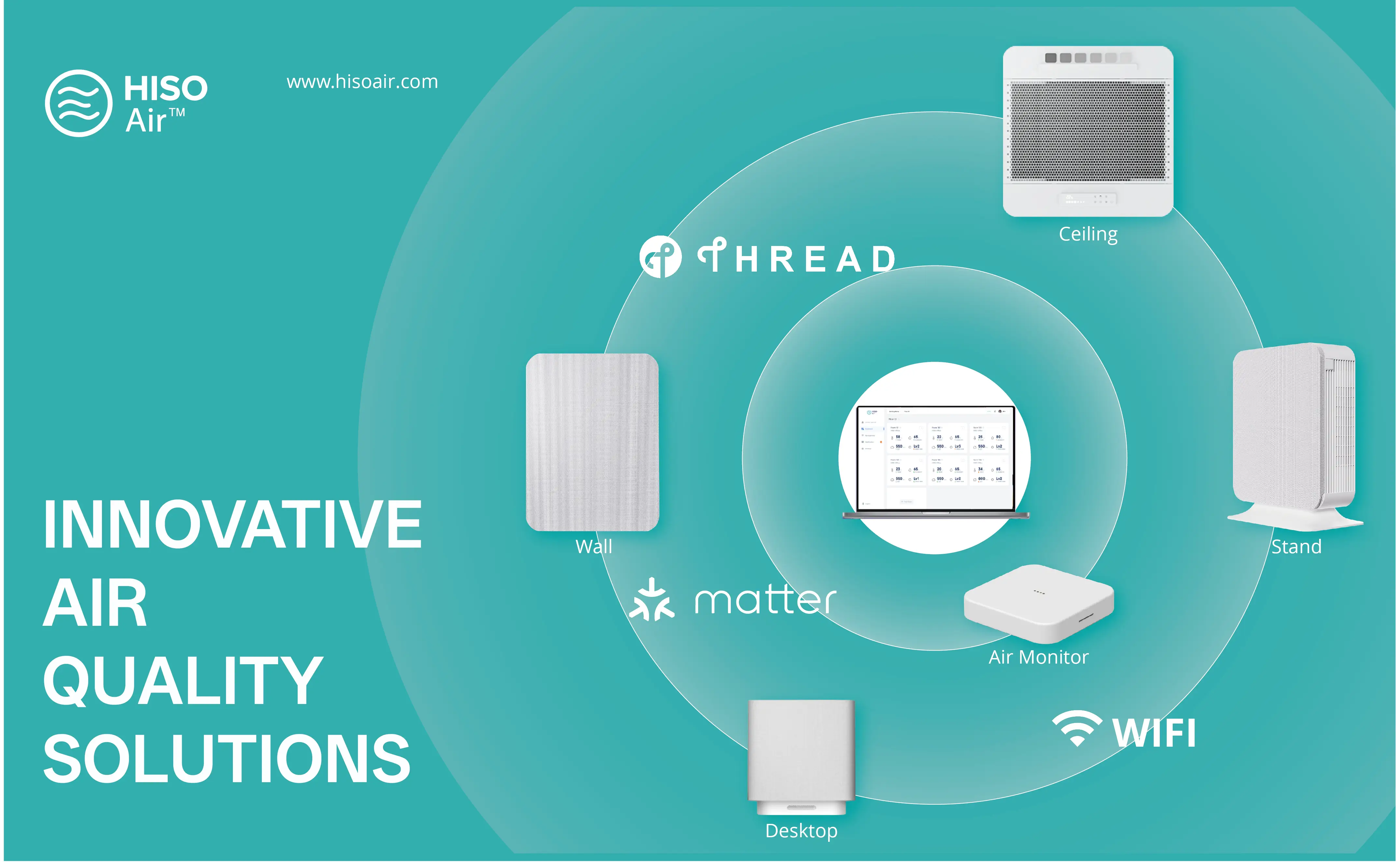
The Advantages of Partnering with HisoAir
While there are many manufacturers in the air quality space, certain suppliers offer distinct advantages that translate directly to business success for B2B buyers.
Product Quality and Innovation Leadership
At HisoAir, our 20+ years of specialized experience in air quality solutions has resulted in proprietary technologies that deliver measurable performance advantages:
-
Tecnologia Decibel Cancellation™: Our unique approach to noise reduction creates quieter operation without sacrificing performance, a key selling point for residential applications.
-
Sistemas avançados de filtragem: Our multi-stage filtration captures 99.97% of particles as small as 0.3 microns, addressing growing consumer concerns about microscopic pollutants.
-
Smart IoT Integration: Our advanced connectivity features allow for remote monitoring and control, appealing to tech-savvy consumers and enabling valuable data collection.
These technological advantages translate directly to competitive differentiation for our B2B partners, allowing them to position their products as premium offerings in the market.
Comprehensive Partnership Support
Beyond product quality, HisoAir technology6 is backed by comprehensive support systems designed specifically for B2B success:
-
Capacidades de personalização: Our engineering team works directly with partners to develop tailored solutions that align with specific market needs and brand positioning.
-
Regulatory Expertise: We maintain current knowledge of air quality regulations across global markets, helping partners navigate certification requirements efficiently.
-
Supply Chain Optimization: Our multiple manufacturing locations allow partners to optimize for tariffs, shipping costs, and delivery timelines.
-
Marketing Collaboration: We provide detailed product information, testing data, and marketing materials that help partners effectively communicate product benefits.
Success Stories from Existing B2B Partners
The true measure of a supplier's value is the success of their partners. Here are brief examples of how our B2B relationships have created mutual success:
-
A North American distributor leveraged our customization capabilities to create a distinctive product line that achieved 28% market share in their region within two years.
-
An e-commerce brand utilized our regulatory expertise to rapidly expand into European markets, reducing certification timelines by 40% compared to their previous supplier.
-
A commercial solutions provider partnered with our engineering team to develop specialized air purification systems for healthcare environments, opening an entirely new market segment.
These partnerships succeed because they're built on mutual commitment to quality, innovation, and long-term growth rather than simply transactional relationships focused on immediate costs.
Making the Right Supplier Decision for Your Business
Selecting the right supplier is perhaps the most consequential decision you'll make as a B2B buyer in the air quality market. This choice will impact everything from product performance and customer satisfaction to operational efficiency and brand reputation.
I recommend developing a structured evaluation framework that weighs factors according to your specific business priorities. While price will always be a consideration, the most successful B2B buyers I've worked with prioritize quality, reliability, innovation capabilities, and partnership potential in their supplier selection process.
Remember that the right supplier becomes an extension of your own business—a true partner invested in your success rather than simply a vendor of products. This collaborative approach creates opportunities for innovation, market expansion, and sustainable competitive advantage that transactional relationships simply cannot match.

How to Optimize Sales Strategies Through Seasonal Considerations?
Have you noticed how air quality product sales fluctuate throughout the year? Understanding seasonal demand7 patterns is crucial for B2B buyers and online sellers looking to maximize inventory efficiency and marketing impact. My experience working with successful distributors across diverse markets has revealed clear patterns that can be leveraged for strategic advantage.
Aligning Product Offerings with Seasonal Demand Cycles
The air quality market experiences predictable seasonal variations that smart B2B buyers can anticipate and leverage. Understanding these patterns allows for more effective inventory planning, marketing campaigns, and sales strategies.
Peak Seasons for Humidifiers vs. Air Purifiers
While both product categories address air quality concerns, they experience different demand cycles:
| Season | Humidifier Demand | Air Purifier Demand | Strategic Opportunity |
|---|---|---|---|
| Winter | Very High (dry indoor heating) | Moderate to High (indoor pollution) | Bundle offerings for complete winter solutions |
| Spring | Low to Moderate | Very High (allergy season) | Focus marketing on allergy relief benefits |
| Summer | Low (except in dry climates) | Moderate to High (wildfire season in some regions) | Regional targeting based on environmental conditions |
| Fall | Moderate (transitional season) | High (allergy season, indoor time increases) | Early preparation messaging for winter wellness |
I recall working with a distributor who struggled with excess humidifier inventory every spring. After analyzing their seasonal demand patterns, we implemented a strategy to gradually reduce humidifier inventory beginning in February while increasing air purifier stock for the approaching allergy season. This simple adjustment improved their inventory turnover by 34% and reduced storage costs significantly.
Planning Inventory and Marketing Around Seasonal Trends
Effective seasonal planning requires a proactive approach that anticipates market shifts:
-
Forward-Looking Inventory Management: Begin adjusting stock levels 60-90 days before seasonal transitions to ensure optimal product availability without excess inventory.
-
Seasonal Forecasting: Analyze historical sales data alongside regional factors (climate patterns, allergy forecasts) to predict demand fluctuations with greater accuracy.
-
Supply Chain Coordination: Work with suppliers like HisoAir who understand seasonal patterns and can adjust production schedules to accommodate your needs.
-
Off-Season Storage Strategy: Develop efficient storage solutions for off-season products to minimize carrying costs while maintaining sufficient inventory for baseline demand.
One of our most successful partners in Europe implements a "seasonal transition plan" that gradually shifts their marketing focus and inventory mix over 6-8 week periods rather than making abrupt changes. This approach has helped them maintain consistent sales volumes throughout the year while competitors experience more dramatic seasonal fluctuations.
Effective Promotional Tactics for Each Season
Beyond inventory planning, seasonal awareness should inform your marketing and promotional strategies throughout the year.
Winter Strategies: Humidifier-Focused Campaigns
During winter months, when indoor heating creates dry conditions in many regions, focus on:
- Highlighting the connection between dry air and increased susceptibility to respiratory infections
- Emphasizing skin hydration benefits during harsh winter conditions
- Creating educational content about optimal indoor humidity levels for health and comfort
- Bundling humidifiers with complementary winter wellness products
I worked with an e-commerce brand that created a highly successful "Winter Wellness" campaign featuring their humidifier products alongside educational content about dry air health impacts. By positioning humidifiers as essential winter health tools rather than optional comfort devices, they achieved a 47% increase in seasonal sales.
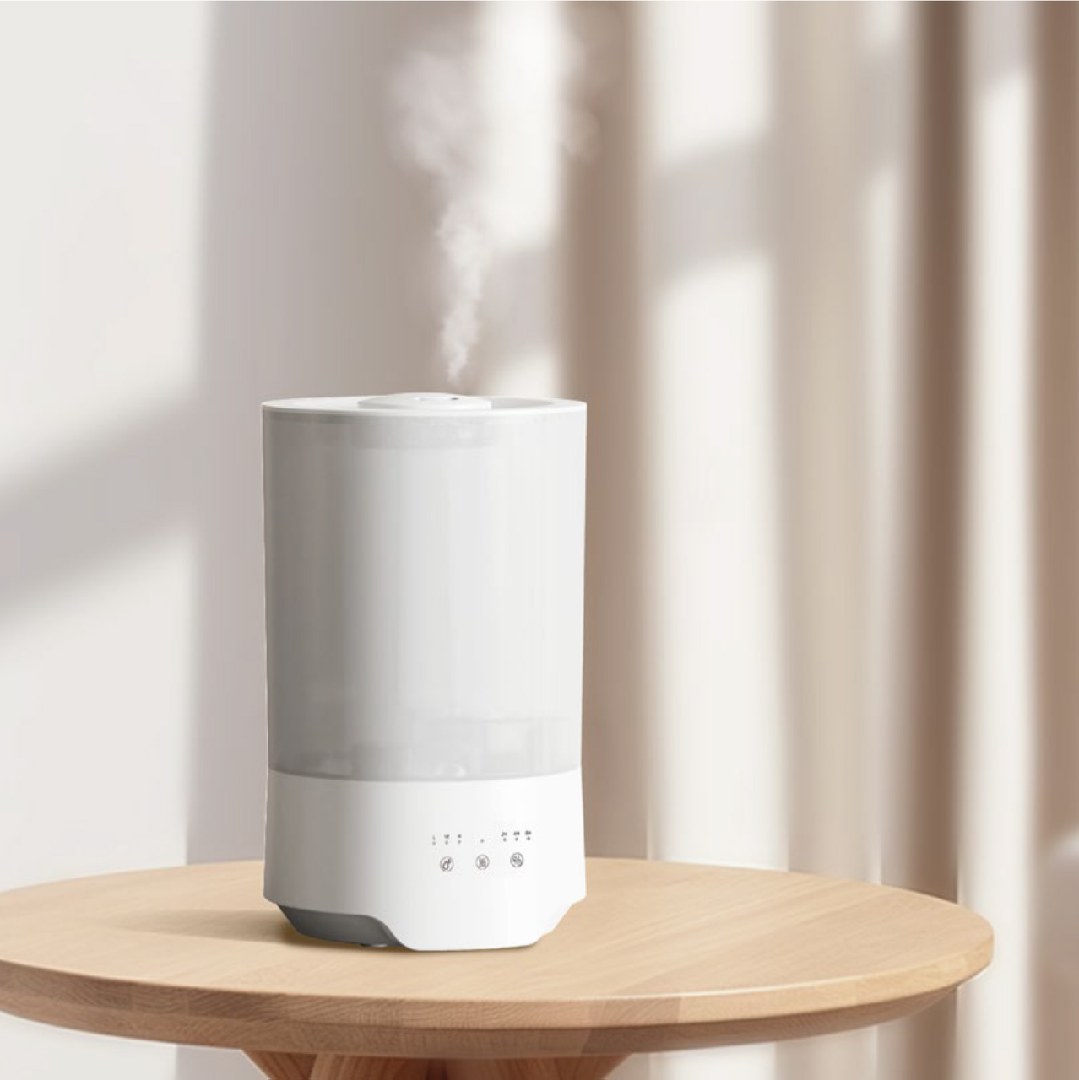
Spring and Fall Strategies: Allergy Relief Campaigns
During peak allergy seasons, when air purifier demand rises:
- Partner with allergy awareness organizations for increased credibility
- Create targeted content addressing specific seasonal allergens (pollen, mold spores)
- Implement geo-targeted marketing based on regional allergy forecasts
- Offer special promotions timed to coincide with high pollen count days
One innovative approach I've seen work well is "allergy alert" marketing, where promotional messages are triggered by high pollen count forecasts in specific regions. This timely, relevant messaging consistently outperforms standard promotional calendars.
Summer Strategies: Air Quality and Comfort Messaging
Summer presents unique opportunities depending on your market:
- In regions affected by wildfires, emphasize smoke and particulate removal capabilities
- In humid climates, focus on the relationship between humidity, comfort, and air quality
- In urban areas, highlight protection from increased outdoor pollution during summer activities
A distributor I worked with in the western United States developed a "Wildfire Ready" campaign for their air purifiers that activated whenever air quality warnings were issued in their target markets. This responsive approach resulted in conversion rates 3.5 times higher than their standard marketing efforts.
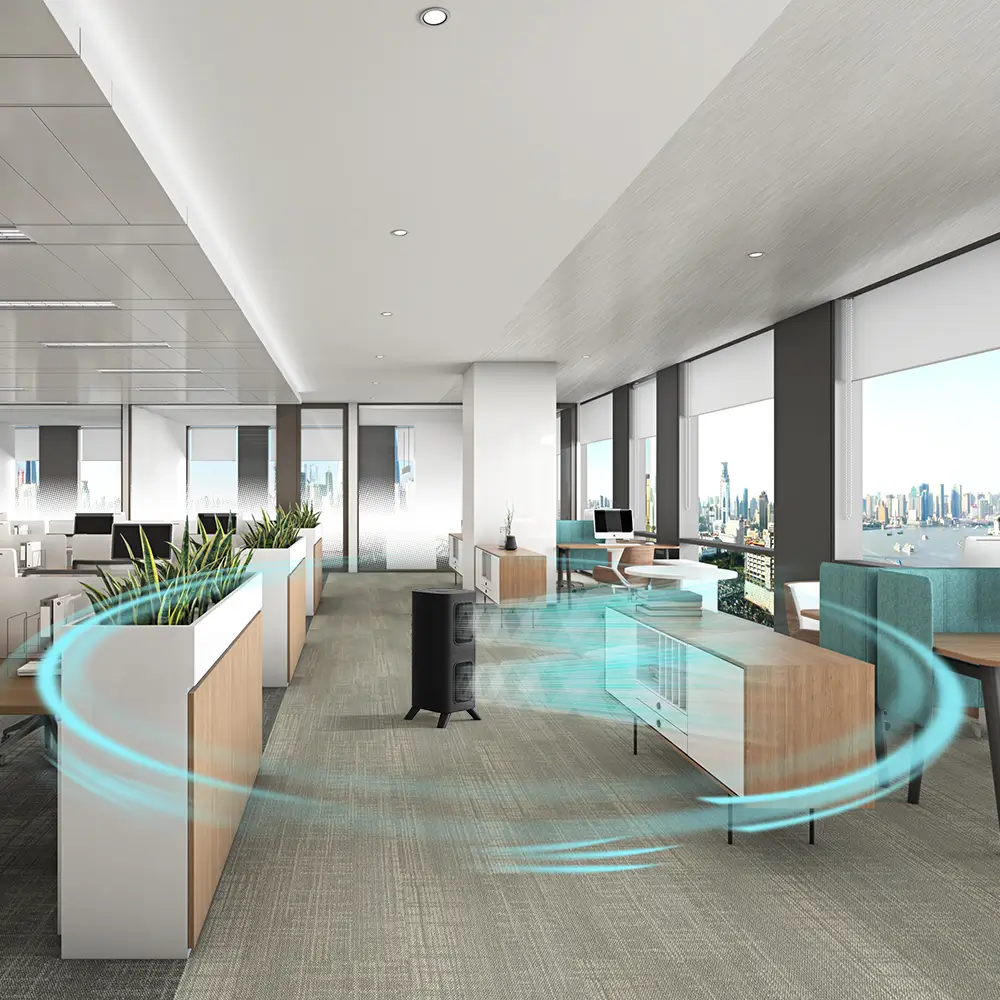
Year-Round Strategies: Education and Health Positioning
While embracing seasonal variations, maintain consistent messaging about:
- The importance of year-round indoor air quality for overall health
- The complementary benefits of using both humidifiers and air purifiers
- The value of premium air quality solutions regardless of season
This balanced approach ensures you capture seasonal peaks while maintaining baseline sales during transitional periods.
Leveraging Seasonal Insights for Competitive Advantage
The most sophisticated B2B buyers I work with go beyond basic seasonal adjustments to create truly differentiated approaches:
-
Counter-Seasonal Opportunities: Identify opportunities to promote products during their traditional off-seasons by highlighting less obvious benefits (e.g., promoting humidifiers in summer for beauty and skin health).
-
Regional Differentiation: Recognize that seasonal patterns vary significantly by geography and tailor your approach accordingly rather than implementing one-size-fits-all seasonal strategies.
-
Early Adopter Advantage: Begin seasonal transitions slightly ahead of competitors to capture early demand and position your brand as a category leader.
-
Data-Driven Refinement: Continuously analyze sales data against seasonal variables to refine your understanding of your specific market's patterns.
By thoughtfully aligning your inventory, marketing, and sales strategies with natural seasonal demand patterns, you create operational efficiencies while maximizing revenue opportunities throughout the year. This strategic approach transforms predictable seasonal fluctuations from a challenge into a competitive advantage.
How to Gain Competitive Edge Through Market Research and Analysis of Top Brands?
Do you know what truly sets market leaders apart in the air quality industry? Understanding the strategies of top brands like Dyson and Levoit isn't just about competitive awareness—it's about identifying actionable insights that can transform your own business approach. My experience working with successful B2B clients has shown that systematic tendências do mercado8 analysis creates significant competitive advantages.
Analyzing Market Trends and Consumer Preferences
The air quality market continues to evolve rapidly, driven by changing consumer preferences9, technological innovations, and growing health awareness. Staying ahead of these trends is essential for B2B buyers seeking sustainable competitive advantages.
Identifying Key Features Driving Market Demand
Through my work with distributors and e-commerce brands across global markets, I've observed several clear trends shaping consumer purchasing decisions:
| Trend | Market Impact | Strategic Opportunity |
|---|---|---|
| Integração de casas inteligentes | Rapidly growing segment, 34% premium potential | Prioritize IoT-enabled products with intuitive apps |
| Funcionamento silencioso | Consistently top consumer concern, especially in bedroom use | Highlight noise reduction technologies in marketing |
| Eficiência energética | Growing importance with rising energy costs | Position as both environmental and economic benefit |
| Design Aesthetics | Increasingly important as devices become visible home fixtures | Invest in distinctive, premium design elements |
| Multi-functionality | Growing preference for devices that serve multiple purposes | Explore 2-in-1 and 3-in-1 product development |
I recently consulted with a distributor who was puzzled by their declining sales despite competitive pricing. Our tendências do mercado analysis revealed they were missing the critical shift toward smart-enabled devices. After adjusting their product mix to include more connected options, they reversed their sales decline within one quarter.
Understanding Consumer Pain Points and Preferences
Beyond feature preferences, successful B2B buyers develop deep understanding of the emotional and practical factors driving consumer decisions:
-
Preocupações com a saúde: Increasing awareness of indoor air quality's impact on health, particularly respiratory conditions and allergies.
-
Integração estética: Desire for devices that complement home décor rather than appearing as utilitarian appliances.
-
Operational Simplicity: Preference for intuitive interfaces and minimal maintenance requirements.
-
Value Perception: Growing sophistication in evaluating performance metrics beyond price point.
-
Impacto ambiental: Increasing consideration of energy consumption and filter replacement frequency.
One of our partners conducted in-depth consumer research that revealed unexpected insights about filter replacement—consumers were more concerned about the hassle of remembering and performing replacements than the actual cost. This led them to develop a successful auto-replenishment program that significantly improved customer retention.
Competitive Positioning Against Leading Brands
Brands like Dyson and Levoit have established strong market positions through distinctive approaches to product development, marketing, and distribution. Understanding their strategies provides valuable insights for your own competitive positioning.
Comparing Product Features, Pricing, and Unique Selling Points
Competitive analysis10 reveals the positioning strategies of market leaders:
-
Dyson: Positions as a premium technology innovator with distinctive design language, leveraging their broader brand reputation to command significant price premiums (typically 40-60% above market average).
-
Levoit: Occupies the "accessible quality" position with strong performance-to-price ratios and straightforward functionality, capturing value-conscious consumers.
-
Other Significant Players: Brands like Honeywell (trusted heritage), Blueair (Scandinavian design aesthetic), and Coway (technological innovation) each maintain distinctive market positions.
Understanding these positioning strategies helps identify potential gaps in the market. For instance, I worked with a B2B client who identified an underserved segment between Levoit's value positioning and Dyson's premium approach. By developing products with premium aesthetics and strong performance at mid-tier pricing, they successfully established a profitable market position.
Strategies to Differentiate Your Offerings
Based on comprehensive competitive analysis, consider these differentiation approaches:
-
Specialized Use Cases: Develop products optimized for specific environments (nurseries, pet homes, offices) with features addressing unique challenges.
-
Service Integration: Create value-added services around your products, such as air quality consultations or customized filter subscription programs.
-
Distribution Innovation: Explore channels underutilized by major competitors, such as professional partnerships (allergists, interior designers) or specialized B2B segments.
-
Technological Specialization: Focus on specific technological advantages (silent operation, energy efficiency, specialized filtration) rather than competing across all parameters.
-
Regional Customization: Adapt products to address specific regional air quality concerns that global brands might overlook.
A distributor I advised in Southeast Asia successfully differentiated their offerings by developing specialized filters addressing the unique air quality challenges of the region, including higher humidity and specific pollutant profiles. This regional specialization allowed them to compete effectively against global brands with more generic approaches.
Implementing Successful Tactics from Top Brands
Beyond direct competition, leading brands offer valuable lessons that can be adapted for your own business strategy.
Learning from Marketing and Customer Service Best Practices
Market leaders excel in several areas worth emulating:
-
Educational Marketing: Dyson's approach of explaining complex technology in accessible ways builds perceived value and justifies premium pricing.
-
Visual Demonstration: Effective use of visual content showing air quality improvements creates powerful purchase motivation.
-
Ecosystem Building: Creating complementary products and accessories that enhance the core offering and increase customer lifetime value.
-
Community Engagement: Developing user communities around air quality concerns creates brand loyalty beyond product features.
-
Responsive Support: Providing exceptional post-purchase support that transforms customers into brand advocates.
I've seen B2B buyers successfully adapt these approaches to their own scale and resources. For example, one of our partners created a simplified version of Dyson's educational marketing approach, developing clear visual materials explaining air quality concepts for their retail partners. This not only improved sell-through rates but also positioned them as category experts.
Implementing Best Practices in Your Business Strategy
The most successful B2B buyers I work with follow a systematic approach to implementing competitive insights:
-
Regular Competitive Reviews: Establish quarterly assessments of competitor products, marketing approaches, and pricing strategies.
-
Performance Benchmarking: Test your products against market leaders to identify specific improvement opportunities.
-
Strategic Differentiation Planning: Develop explicit strategies for differentiation rather than attempting to compete directly on all fronts.
-
Selective Innovation Investment: Focus R&D resources on areas where meaningful differentiation is achievable rather than trying to match every competitor feature.
-
Market Position Monitoring: Track your brand perception relative to competitors through regular retailer and consumer feedback.
This structured approach transforms competitive awareness from a passive activity into a strategic advantage that drives product development, marketing, and business growth.
By combining thorough tendências do mercado analysis with strategic competitive analysis, you position your business to identify and capitalize on opportunities that others miss. This informed approach is particularly valuable in the rapidly evolving air quality market, where consumer preferences and technological capabilities continue to advance at an accelerating pace.
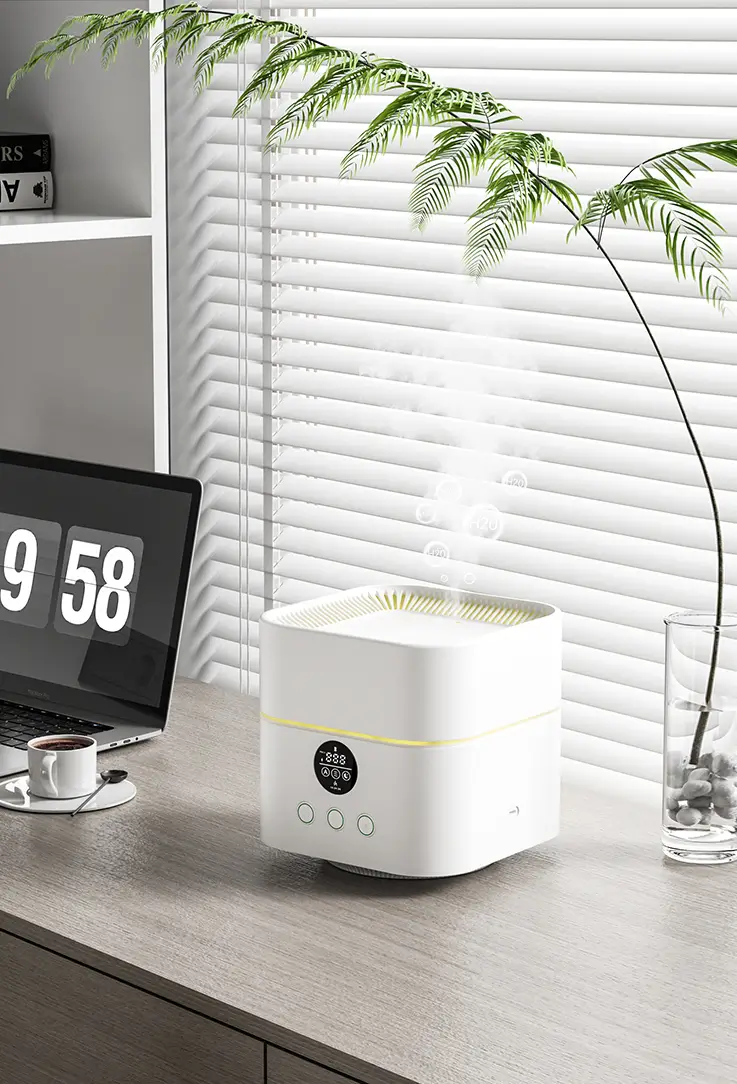
Conclusion: Maximizing Your Success in the Air Quality Market
As we've explored throughout this article, the air quality market presents significant opportunities for B2B buyers and online sellers who approach it with strategic insight. By understanding the interplay between air purifiers and humidifiers, you can position your business for sustainable success in this growing industry.
Let's recap the key insights we've covered:
First, leveraging health benefits as a primary sales driver creates compelling value propositions that resonate with increasingly health-conscious consumers. By focusing your marketing on specific benefits like allergy relief, asthma management, and respiratory health, you transform technical devices into essential wellness solutions.
Second, 2-in-1 devices that combine air purification and humidification offer powerful differentiation opportunities through OEM partnerships. These integrated solutions not only meet diverse consumer needs but also create operational efficiencies for retailers and distributors while commanding premium price points.
Third, selecting reliable suppliers like HisoAir with proven quality certifications, scalable production capabilities, and comprehensive support systems is perhaps the most consequential decision you'll make as a B2B buyer. The right manufacturing partner becomes an extension of your business, contributing to your long-term success through consistent quality and collaborative innovation.
Fourth, optimizing your sales strategies through seasonal considerations allows you to align inventory, marketing, and promotional activities with natural demand cycles. This strategic approach transforms predictable seasonal fluctuations from a challenge into a competitive advantage.
Finally, conducting thorough market research and competitive analysis provides actionable insights that can inform your product development, positioning, and marketing strategies. By understanding what drives market leaders' success, you can identify opportunities for meaningful differentiation.
As the air quality market continues to evolve, I believe the greatest opportunities will emerge at the intersection of these strategic areas. For instance, combining seasonal insights with health benefit messaging creates particularly powerful marketing campaigns. Similarly, leveraging supplier partnerships to develop seasonally-optimized product variations can create unique market positions that larger competitors struggle to match.
At HisoAir, we're committed to supporting our B2B partners through every aspect of this journey. With our manufacturing facilities across China, Vietnam, and Thailand, our CNAS-approved testing laboratory, and our dedicated engineering teams, we provide the foundation upon which successful air quality businesses are built.

I invite you to consider how these strategic insights apply to your specific business context. Whether you're an established distributor looking to optimize your existing operations or an entrepreneur exploring new opportunities in the air quality space, the principles we've discussed provide a roadmap for sustainable success.
The air quality market will continue to grow as global awareness of indoor environmental health increases. By implementing the strategies outlined in this article, you position your business to not only participate in this growth but to shape the future of the industry through innovation, quality, and strategic insight.
I look forward to seeing how you apply these principles to create your own success story in the dynamic world of air quality solutions.
-
Learn about indoor air quality's critical impact on health from the National Institute of Environmental Health Sciences. Both short and long-term exposure to indoor air pollution can cause respiratory diseases, heart disease, cognitive deficits, and other serious health issues, making air quality solutions increasingly essential for modern living environments. ↩
-
Discover how air pollution affects respiratory health according to the EPA. Studies have linked particle pollution exposure to various respiratory health effects, with people having heart or lung disease and older adults being particularly vulnerable to these impacts, highlighting the importance of effective air purification solutions. ↩
-
Explore the benefits of using air purifiers and humidifiers together as explained by IQAir. These 2-in-1 devices offer several advantages for improving indoor air quality, with humidifiers adding moisture to the air while air purifiers remove contaminants, creating a comprehensive approach to healthier indoor environments. ↩
-
Understand the benefits of OEM partnerships as detailed by ZINFI. These collaborations are crucial for maintaining product quality and meeting production demands, with partner management automation helping businesses ensure consistent standards and efficient manufacturing processes across their supply chain. ↩
-
Learn why air purifier certifications matter according to IAQ Works. Various certifications, regulations, and standards play crucial roles in ensuring safety, efficiency, and indoor air quality across different applications, helping consumers make informed decisions when selecting air quality products. ↩
-
Discover HisoAir's innovative air purification technologies. With Decibel Cancellation™ Technology offering quiet, high-performance air purification ideal for noise-sensitive environments, and advanced filtration systems capturing 99.97% of particles as small as 0.3 microns, HisoAir delivers premium solutions for demanding air quality applications. ↩
-
Explore seasonal trends in the humidifier market as analyzed by HisoAir. Future humidifiers will focus on evaporative technology, stainless steel tanks, and IoT integration, enhancing efficiency, hygiene, and smart home connectivity to meet evolving consumer demands throughout different seasons. ↩
-
Review the latest air purifier market trends from Technavio. The global Air Purifier Market size is expected to reach USD 7271.8 million from 2025-2029, expanding at a CAGR of 8.2% during the forecast period, indicating significant growth opportunities for businesses in this sector. ↩
-
Understand evolving consumer preferences in the air humidifier market from Data Insights Market. Consumers are increasingly seeking devices that can be easily integrated with other smart home products, such as thermostats, air purifiers, and lighting, driving innovation in connected air quality solutions. ↩
-
Examine competitive landscape analysis of the US Indoor Air Quality Market from Business Wire. The market was valued at USD 10.5 billion in 2024 and is projected to reach USD 12.9 billion by 2029, rising at a CAGR of 4.30%, with detailed insights on leading manufacturers' rankings and market share. ↩

